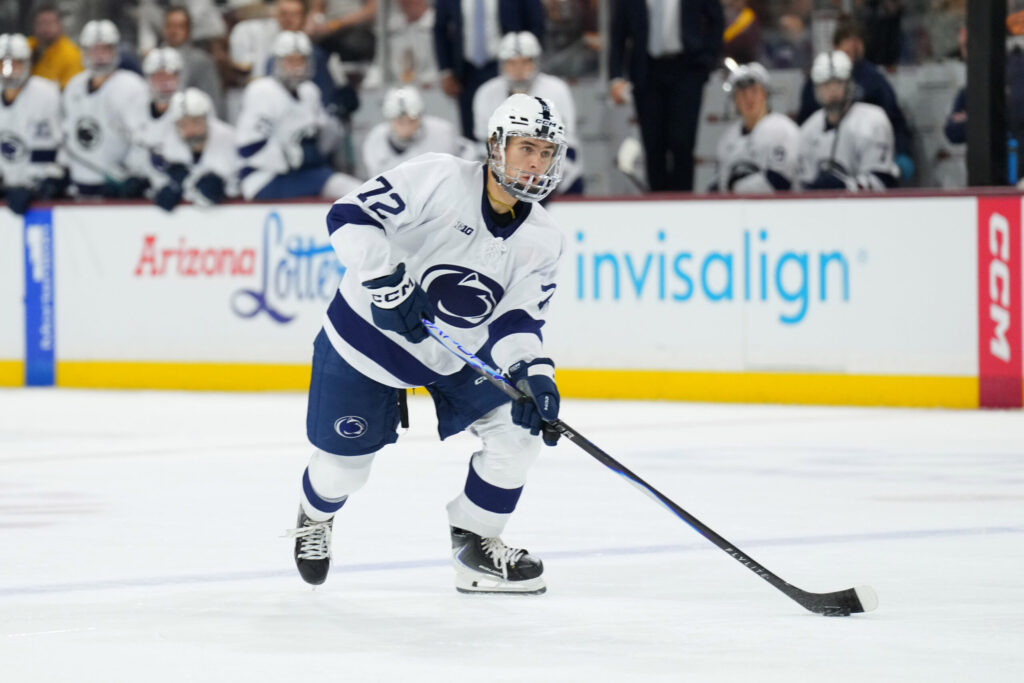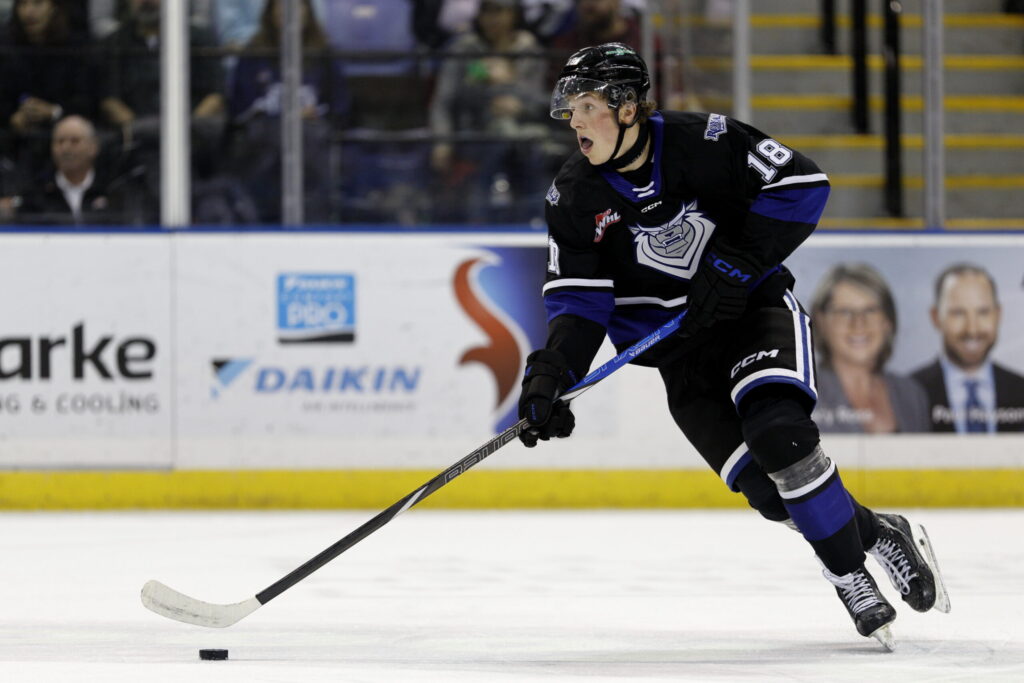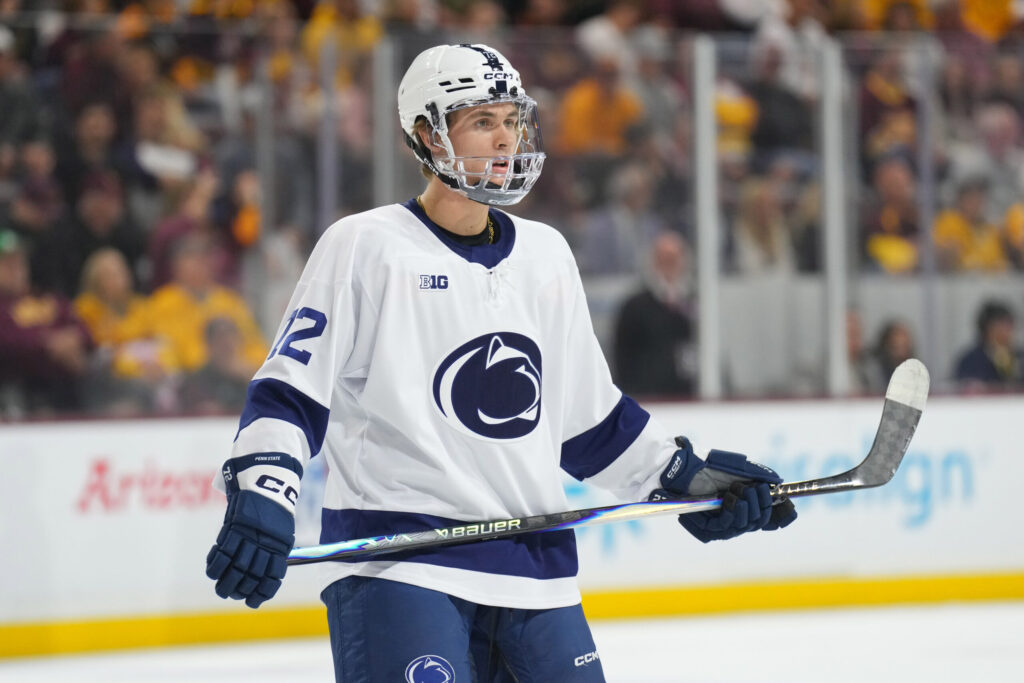The NHL regular season is barely finding its legs, but in the scouting world, the cycle is relentless. As teams jockey for position in the 2025-26 campaign, the league’s talent evaluators have already fixed their gaze firmly on the future.
On Monday, NHL Central Scouting (CS) released its Preliminary Players To Watch List for the 2026 NHL Draft. For those who follow the pipeline, this is the official starting gun.
This isn’t a definitive ranking; it’s a fluid watchlist designed to categorize the talent pool as the draft-eligible season begins. Players are assigned a letter grade: ‘A’ indicates a potential 1st-round candidate, ‘B’ suggests a 2nd or 3rd-rounder, ‘C’ points to the 4th or 5th round, and ‘W’ (for ‘Watch’) denotes a potential 6th or 7th-round selection.
This initial list sets the narratives that will be debated, reinforced, and shattered over the next eight months. After digging through the names, a few key storylines are already taking shape.
The New Power-Play: NCAA’s Top-End Takeover
For years, the consensus #1 pick was almost invariably a CHL phenom. That’s still technically true, but the development path for the 2026 class’s elite has taken a fascinating turn.
The two players sitting atop most public boards, and the clear headliners of the CS list, are both alumni of the Western Hockey League who have taken their talents to the NCAA.
Leading the pack is Gavin McKenna (LW). The consensus top prospect, McKenna is now suiting up for Penn State after a dominant WHL career with the Medicine Hat Tigers. This move is significant, testing a generational talent against older, stronger, and more physically mature competition. Central Scouting Director Dan Marr isn’t concerned, praising McKenna’s “elite smarts and skills” and noting he is “ultra-focused and prepared” for the jump.


Right behind him is Keaton Verhoeff (D), a hulking 6’4″, 208-pound defenseman now patrolling the blue line for the University of North Dakota. Verhoeff, a product of the Victoria Royals, is projected as the potential No. 2 pick. He represents the prototypical modern defenseman: a formidable mix of speed, offensive upside, and size.
This 1-2 punch of WHL-to-NCAA talent signals a potential shift in high-end development strategy. Rather than grinding out a 68-game major-junior season, these players (and their advisors) are opting for the NCAA’s reduced schedule, high-intensity games, and elite strength-and-conditioning programs to round out their pro-ready frames.
The Factory: The CHL Still Runs the Draft Floor
While the NCAA may have snagged the top two spots, make no mistake: the Canadian Hockey League remains the bedrock of the NHL Draft. The CHL developed a staggering 237 players on the preliminary list, including 17 of the 27 total ‘A’ rated prospects.
The Ontario Hockey League leads the way with 93 players, followed by the Western Hockey League (89) and the Quebec Maritimes Junior Hockey League (55).
The OHL’s eight ‘A’ rated players are a diverse group. It includes prototypical power forward Ethan Belchetz (LW) of the Windsor Spitfires, whose 6’5″, 228-pound frame is already turning heads. It also features high-skill centers like Sarnia’s Alessandro Di Iorio and Brantford’s Caleb Malhotra, the latter of whom is already committed to Boston University for 2026, further blurring the lines between the CHL and NCAA pipelines. Russian-American forward Nikita Klepov (RW) of the Saginaw Spirit, a 2025 Hlinka-Gretzky Cup gold medalist, also earned an ‘A’ grade and is ticketed for Michigan State in 2027.
Not to be outdone, the WHL produced seven ‘A’-rated players, showcasing particular strength on defense with Carson Carels (Prince George), Ryan Lin (Vancouver), and Daxon Rudolph (Prince Albert) all earning top marks.
However, the WHL’s most explosive story right now is Kamloops forward JP Hurlbert (LW). Hurlbert has rocketed out of the gate, leading the entire league in scoring with an eye-popping 11 goals and 13 assists for 24 points through his first 11 games. That’s the kind of production that doesn’t just keep you in the ‘A’ conversation—it starts to push your name into the top-10 discussion.
Global Reach: The NTDP and European Contingent
The U.S. National Team Development Program (NTDP), often a dominant force at the top of these lists, had a surprisingly quiet showing in the ‘A’ category. Only one player, defenseman Luke Schairer, received the 1st-round designation. The Charlotte, N.C. native is one of only two ‘A’-rated North American skaters who did not play in the CHL.
This isn’t to say the NTDP is having a “down” year. The program still placed seven players in the ‘B’ category, including forwards Mikey Berchild, Casey Mutryn, and Logan Stuart, suggesting a class defined by depth rather than a singular superstar.
Internationally, the 2026 class looks strong and balanced. Eight international skaters received ‘A’ ratings, split evenly with four from Sweden and four from Finland. This group includes names that will become very familiar to draft watchers: Swedish defenseman Malte Gustafsson and forward Elton Hermansson, alongside Finnish winger Oscar Hemming. This strong European presence suggests the top half of the first round could be a global affair.
Gaps in the Crease? The 2026 Goalie Class
One of the most immediate takeaways from the list is the perceived weakness of the 2026 goaltending class, especially following a strong 2025 group.
Central Scouting did not give a single goaltender an ‘A’ rating.
The top netminders in the class, for now, are a group of seven who received ‘B’ ratings. This list includes Zach Jovanovski (Guelph, OHL), Harrison Boettiger (Kelowna, WHL alum), and Brady Knowling from the NTDP.
This lack of a clear-cut, first-round goalie talent will put immense pressure on scouts. It means GMs looking for a franchise netminder will either be forced to “reach” on a ‘B’ prospect they believe has ‘A’ upside or hunt for a late-blooming prospect who emerges over the winter.
Debates and Head-Scratchers: Where Scouting Gets Interesting
Beyond the top names, the most compelling part of any preliminary list is the discrepancies—the rankings that make you double-check the sheet. And the 2026 list has some genuine head-scratchers.
The Big Question: Swedish center Viggo Björck. For much of the past year, Björck has been a fixture in the public scouting world’s projected top three. Central Scouting, however, handed him a ‘B’ rating. The concerns reportedly stem from his 5’9″, 177-pound frame and a slow start to his season, where he’s splitting time between Sweden’s top professional league (SHL) and the J20 junior league. This is a classic “scout vs. stats” and “skill vs. size” debate that will rage all season.
The Baffling Drop: The most shocking grade on the entire list belongs to Adam Valentini (LW). A forward for the University of Michigan, Valentini was projected by many as a surefire first-round option. Central Scouting gave him a ‘W’ rating, projecting him as a 6th or 7th-round pick. This is a staggering difference of opinion. It’s unclear if this is related to a slow start in the NCAA or, as some have suggested, a “message” after his late commitment switch from the OHL, but it’s the list’s single biggest mystery.
The ‘C’ Grade Bargains? On the other end of the spectrum are players who many feel are ranked too low.
- Joe Iginla (RW): The Edmonton Oil Kings forward and son of Hall of Famer Jarome Iginla received a ‘C’ grade. Given his bloodlines and strong performance, many scouts will likely have him higher on their personal boards.
- Pierce Mbuyi (LW): The Owen Sound Attack forward was one of the CHL’s most dynamic rookies last season. A ‘C’ rating for a player with his high-end skill seems pessimistic.
The Overage Riser: Finally, a ‘B’ rating was given to Egor Barabanov (C) of the Saginaw Spirit. As a 2006-born overage prospect, a ‘B’ grade is significant. It shows that scouts view his success as a top-line contributor as legitimate NHL-translatable skill, not just a product of being older than his peers.
The Long Road Ahead
It is, of course, only October. This list is a snapshot, not a prophecy. JP Hurlbert’s torrid start may prove sustainable, pushing him into the top 10. Viggo Björck may find his footing in the SHL and force his way back into the ‘A’ column. Adam Valentini might light up the Big Ten and make his ‘W’ rating look absurd by Christmas.
What we know for sure is that the 2026 NHL Draft class has its opening storylines: a new-look NCAA-driven top-two, the familiar and formidable depth of the CHL, and a handful of controversial rankings that will fuel scouting debates from now until the first name is called. The board is set.
Created with the aid of Gemini AI
